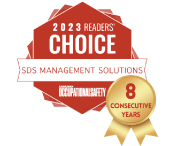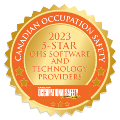How to Select Chemical Substitutes
February 7, 2019

Deciding how to get started on chemical substitution and looking for information on chemical alternatives is a challenge for any business. Selecting an alternative is a change and as a result a Management of Change process approach should be used to find the best and most effective chemical substitute.
You may have an obligation to substitute hazardous chemicals with less hazardous alternatives when possible. Exposure to more than one substance can lead to added or synergistic hazardous effects. An otherwise low-hazard product can cause chemical reactions like an explosion when it burns or reacts with other chemicals.
Here is some guidance on a quick process to choose a chemical substitute if you have little experience with chemical management.
Step 1: Understand the hazard. Understand the risk.
You will need to work through some of the following questions to understand if you can substitute a chemical product in your workplace.
1. Do you understand the hazards of the chemical you currently are using?
This can be found in section 2 and 15 of the Safety Data Sheet. You will need to look at the classification, pictograms and warnings, as well as H-Statements for the product.
You can also use Chemscape’s Chemical Management Software, CHAMP, to provide you with this information on chemical hazards in seconds.
2. How are you currently using the chemical?
To assess the risk, you must know how the chemical is intended to be used. Identify all the work tasks or processes in which the chemical is used at the workplace. This includes how the chemical is made, used, handled, stored, disposed or transported.
3. How can this chemical harm workers?
During chemical use there is a possibility that the chemical could come into contact with skin or eyes, be ingested or inhaled. The possibility will be high in certain tasks such as manual mixing of chemicals and low in others, such as storing containers. It is important that you recognise and are aware of all the ways the chemical may harm your workers.
4. What are the risks involved?
The precautionary statements can provide you with information on potential risks for storage, accidents, prevention and disposal.
5. What can you change about using the chemical that would reduce the risk?
Step 2: Find chemical alternatives
One of the biggest challenges in chemical substitution is identifying alternatives. If you start at the source during the purchase decision it can be easier to shop and compare the technical performance of a chemical vs. the hazards of the product. There are a few simple ways to quickly assess hazards with the understanding of GHS classification systems: a product with the signal word “Danger” is more hazardous than a product with the signal word “Warning”; the ![]() ,
, ![]() and
and ![]() symbols are more hazardous than the
symbols are more hazardous than the ![]() symbol.
symbol.
Your suppliers should be able to provide you with ideas on substitute chemicals that can provide similar performance quality with fewer hazards to workers. A tool like CHAMP has a library of chemical alternatives to choose from based on product use. The Hazard Statements from the Supplier Label or Section 2 of the SDS can be compared to the Chemscape A-E chart. Locate the most severe hazard statement and assign that product to this hazard group.
You will also want to:
- Make a list of possible substitutes.
- Check the list of substitutes against the requirements for the job.
- Find the substitutes that best meet the requirements.
- Test the substitute and see how well it performs.
- Decide if the substitute meets the performance requirements.
Step 3: Understand the hazards of the new chemical?
Substituting one chemical for another can introduce new hazards with unintended consequences. For example, eliminating a solvent to clean a surface with a pressure gun to spray water can introduce noise, vibration or ergonomic hazards. A decision on which is the least hazardous alternative will need to be made. This step is a repeat of step 1 to do a risk assessment on the chemical to understand the hazards and risks. A tool like Chemscape’s CHAMP can quickly provide a hazard assessment of the chemical alternative. There are always other factors such as cost and practicality that need to be part of the decision-making process when weighing the pros and cons of choosing a chemical substitute. A trial use can be a good method to test out the effectiveness of the new substitute and get feedback from end-users.
Step 4: Implement the new chemical substitute.
If you have made the decision to change, ensure you have:
- Trained end-users on how to use the substitute.
- Have controls in place for the new hazards of the substitute.
- Communicate the change.
- Monitor the effectiveness of the substitute and get feedback from end-users.
- Remove the old chemical no longer in use and dispose of as per instructions on the SDS.
Reduce the Health & Environmental Risks from Workplace Chemicals
The practicality of this guidance will depend on what you are changing. For more complex substitutions you may need to involve more parties in the decision-making process and have a more rigorous testing method (research, monitoring and surveillance) to prove the ‘fit’ of the substitute. Safer substitutes are continuously coming on the market. The transition to safer substitutions or non-chemical alternatives is a growing and recognized strategy to reduce the health and environmental risks posed by chemicals.



